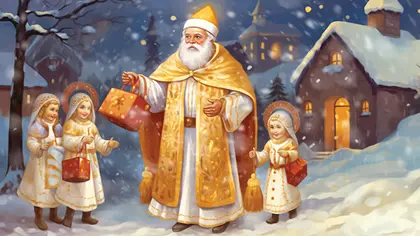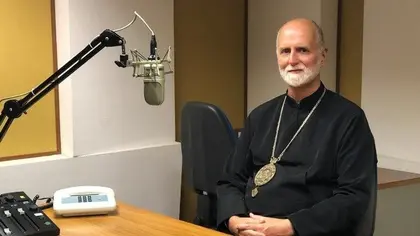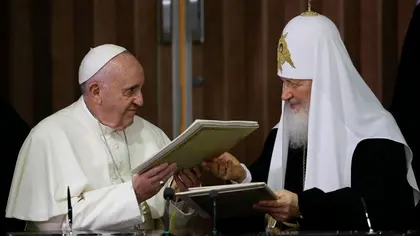December has arrived, and with it the very special atmosphere connected with the approaching Christmas festivities and New Year. Throughout the Christian World and where it impacts, regardless nowadays if one is religious or not, this is a time when local customs and traditions are faithfully revisited alongside more recently developed ones.
The appearance of Father Christmas, the decorated Christmas tree, and the practice of welcoming in the New Year with champagne and fireworks are, after all, products of modernity – and with it the commercialization that has gradually come to overshadow the original religious elements.
JOIN US ON TELEGRAM!
Follow our coverage of the war on the @Kyivpost_official.
It is not widely known that some of today’s celebrations in December, or in January – as was the case in Ukraine, where Christmas was observed according to the old Julian calendar on Jan. 6-7, not the more modern Gregorian one on Dec. 25 – are based not only on Christian beliefs, but also rooted in the pagan past, or inspired by myths, legends and norms created in ancient or medieval times. And the reason for the discrepancies in the dates on which Christmas is celebrated have also puzzled many.
Darkest day of the year
The first recorded time when Christmas was celebrated on Dec. 25 was as late as 336, over three centuries after Jesus is believed to have been born. This was during the time of Constantine, the first Roman Emperor to convert to Christianity, whose policies of promoting the creation of a uniform Christian doctrine led to Christianity eventually becoming the official religion of his vast empire.

Buddhist Leader In Kalmykia Condemns Russian War
Initially, Easter, the celebration of Christ’s resurrection, was regarded as the most important Christian holy day, and its date was fixed at the grand assembly of Christian hierarchs at the Council of Nicea in 325. Soon afterwards, Pope Julius I officially declared that the nativity of Jesus would from then on be celebrated on Dec. 25
Why on this date? Various theories exist. It appears that Dec. 25 might have been chosen because of the importance of the pagan celebrations of the Winter Solstice – particularly the midwinter festival of Saturnalia, and the “birthday” of the god Mithras, equated with Sol Invictus (Invincible Sun). There were also the Jewish Hanukkah celebrations, all of which took place in December around this date. The observance of the nativity of the Christian god on Dec. 25 was meant to replace these ancient traditions while providing an alternative occasion for celebration.
Competing calendars
And why Dec. 25 and Jan. 7? In 1582 Pope Gregory XIII recognized that the Julian calendar, first implemented by Julius Caesar in 45 BCE. was based on a miscalculation and had too many days in a year. He introduced his more accurate Gregorian calendar, which involved an adjustment of 10 days. Most of Europe eventually adhered to the revised calendar, retaining Christmas Day on Dec. 25. The Orthodox world, however, which had broken with Rome back in 1054, stuck to the original Julian calendar and retained Jan. 6-7 for the celebration of Christ’s nativity.
Gradually, however, some of its members also switched to Dec. 25, including the Greek and Bulgarian Orthodox Churches, while the Russian, Belarusian, Armenian and Ethiopian Orthodox Churches still maintain the Julian calendar.
In Ukraine, to emphasize the country’s freeing itself from the vestiges of Russian cultural and religious tutelage toward integration into Europe, in 2017 Ukraine’s parliament decided that Dec. 25 would become a public holiday. This year, during the second year of Russia’s barbaric war against Ukraine, both the Ukrainian Orthodox and Catholic Churches finally went over to the Gregorian Calendar, thereby underscoring their distancing from Moscow.
St. Nicholas, Father Christmas and Santa Claus
Another difference between the Latin and Orthodox Churches concerns the importance of the figures of St. Nicholas and that of his commercial derivative, Father Christmas, which is linked to how and when presents are given. St. Nicholas was a Greek bishop who lived at the time of the Council of Nicea. Although it remains unclear how much about his life is truth or legend, he has remained one of the major saints for eastern Orthodox believers. His feast-day is celebrated on Dec. 5 or 6 in Western Christian countries, and on Dec. 19 in Eastern Christian countries using the Julian Calendar, which in veneration of him as a supposed generous gift-giver presents are traditionally given.
On the other hand, in the “Latin” Christian world the Church sought to associate gift-giving with the Nativity of Jesus itself. Nevertheless, the symbol of St. Nicholas gave rise to the idea of Santa Claus, from Saint Nicolaus, and was merged with a subsequent imaginary figure of Father Christmas, with whom the idea giving Christmas presents is now identified. Interestingly, the first likeness of the modern image of Santa Claus, or Father Christmas, as jovial, plump man with a white beard and a sack of gifts for children was produced in 1881 by the American political cartoonist Thomas Nast and appeared in Harper’s Weekly.
During the Soviet period, when the communist authorities sought to combat religion and eliminate Christmas and other religious celebrations, they introduced a figure similar to Father Christmas in appearance and function. He was called Grandfather Frost (Ded Moroz) and was always accompanied by his grand-daughter helper – the Snow Maiden (Snegurochka).
In western Ukrainian folklore, St. Nicholas, aka Sviatiy Mykolai, is often accompanied by a mischievous devil serving as a warning for naughty children. In the Netherlands, the counterpart of the generous saint, Sinterklaas, is assisted by helpers with black faces and colorful costumes called “Black Petes.”
But perhaps the most amusing interweaving of the traditional Christian elements of Christmas with the darker legacy from the superstitious past is Mykola Hohol’s celebrated short story “Christmas Eve.” In it, the most famous writer from Ukraine known, by his Russian name as Nikolai Gogol, depicts Christmas as a time when under the surface of the religious celebrations, devilish gaiety thrives. He notes that even the carols are pagan vestiges adapted to Christian times.
Hohol, that sensitive genius from Ukraine’s Poltava region, understood very well that there is more to Christmas than meets the eye.
This is an updated version of an article which first appeared in the December 2018 issue of Ukrainian International Airlines in-flight magazine Panorama. See the original here.
You can also highlight the text and press Ctrl + Enter






